1) The huge indoor stadium, «Philips Arena» in
Atlanta, Georgia in the USA, is filled with thousands of faithful
who have their arms raised up high, while a large chorus dressed in
red is chanting various hymns and "bewitching" the crowd. The
"great teacher of Christ", the renowned "healer", dressed in an
obviously expensive white, glittery suit buttoned to the top, who is
"blessing" his faithful "customers". His facial complexion
"glows", thanks to his wealthy, comfortable lifestyle. The
crowd is enthused at the sight of him, and many are crying, deeply
touched. The orchestra on center-stage is directed by a chubby
commentator who is also the great "teacher's" master of ceremonies.
The show begins. Soon, the music stops and the healer begins
his "miracles", before the awestruck audience. The
miscellaneous patients - many of them with crutches - hobble onto
the stage, "bewitched", in order to display their adoration of the
great "healer". He, after giving them a sympathetic look,
shouts out with conceit: "No more!" He lifts up an
invalid woman from her wheelchair, then gives her a thump on the
forehead with his palm and she falls down, but.... miraculously, she
recovers instantly! Ooooh !! What a huge miracle! the audience below
is shouting ecstatically... A show with miraculous
cures, at the price of a... ticket. All those who get onto the
stage supposedly have an actual, serious health problem, but the
"great, holy healer" gives all of them the same thump on the
forehead (see image below); they
all fall down and... are instantly healed. Everyone in the
audience is crying inconsolably, however, the chubby commentator is
all smiles and is rubbing his hands with satisfaction.
Needless to say that not a single Christian Crucifix is anywhere to
be seen. Near-death cases instantly begin to sprint like deer;
cancer patients are aglow with health; the lame prance about like
goats. However, because there was the danger of a very obese black
woman falling down and breaking something, the healer's goons hurry
to grab her in time, to break her fall. This is the
notorious "healing apostle" of Christ -
Benny Hinn - who has a vast fortune, including luxurious villas
and terribly expensive cars with which he tours all over the world.
Come.... all ye gullible.
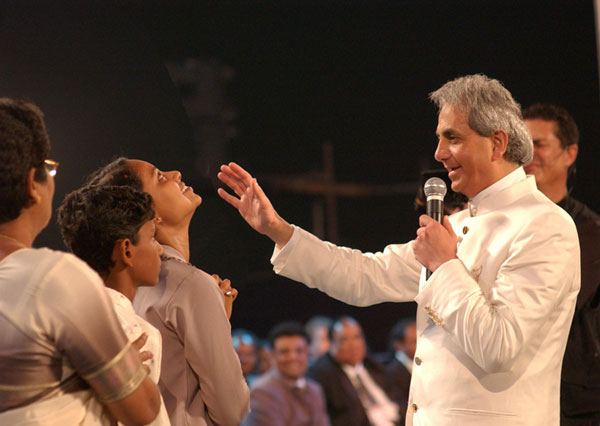
2) We are in the big, central
mosque in Ankara, the
Kocatepe Camisi.
This mosque began to be constructed in the sixties and was completed
in 1987. It is where all the official rituals take place, in
the presence of the Turkish military and political leaders. On
that day, there was a religious function by one of the largest
religious orders of Turkey - the Naskbendi - whose members are most
of the ministers of the Erdogan government. Women are
prohibited. The members of the order gather in the center of
the mosque and form concentric circles. They wear long, brown
"cassocks". In the middle of the circles is the Sheikh who
will be directing the dance. The orchestra, which is comprised
of huge tray-shaped drums, is on a gallery and soon begins beat out
its monotonous rhythm. The
whirling dervishes (image below) at first begin to spin about gently. The
Sheik watches them from the centre of the circle. The rhythm
soon speeds up, accelerates, and their moves become even faster.
The rhythm speeds up even more, and the dervishes are now swirling
incessantly. Some of them have by now fallen into a trance and
have lost touch with reality. Their bodies are now all moving
in tune to the rhythm, and the sheikh moves among them, observing
their ecstatic state until they slow down to end the dance.
Their movements are reminiscent of the frenzied repetitious dances
of indigenous Africans.
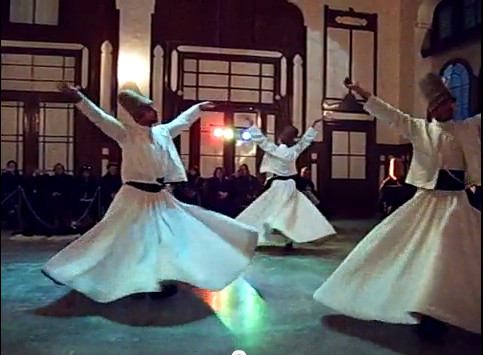
3) The scene here is in an old cathedral, a (Roman)
catholic temple in the South of France. The "Catholic priest" - a
young, 25-year-old man, Franck Legros - performs the "divine
liturgy" and distributes "communion" to the faithful with the
characteristic Ostia. The same priest also sheds his cassock
and dons a black dancing form (photo below - also, a related documentary:
Un danseur dans la maison de Dieu - A dancer in the House of
God) and… he invites his musicians up to the sanctum. The music
begins. Young girls dressed provocatively and a few young boys also
go up to the sanctum and, under the guidance of the prancing priest
they commence their dancing figures. In a while, the sanctum
has been turned into ... a dance platform, and the music and drums
echo through the temple. The priest has become famous, because
he has introduced a new, "contemporary"... "divine liturgy".
He has been accumulating fans from all over France, as he has...
"enhanced" the liturgy, with dance routines dressed in extremely
provocative dance wear, prancing around in the sanctum. His
fame reached Rome, and... after receiving the Pope's blessing, the
major Roman Catholic Channel "KTO" hurried to film scenes from that
"lilting liturgy" in order to broadcast it to all the world!
Woe betide us !
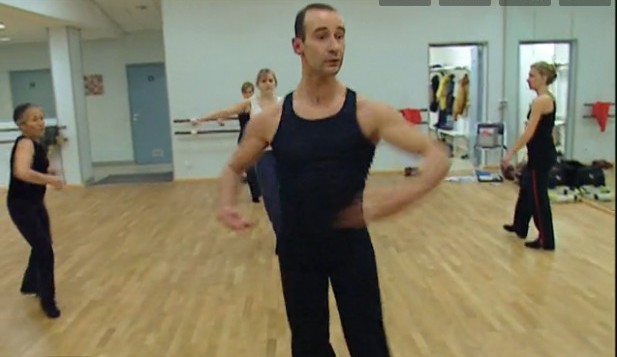
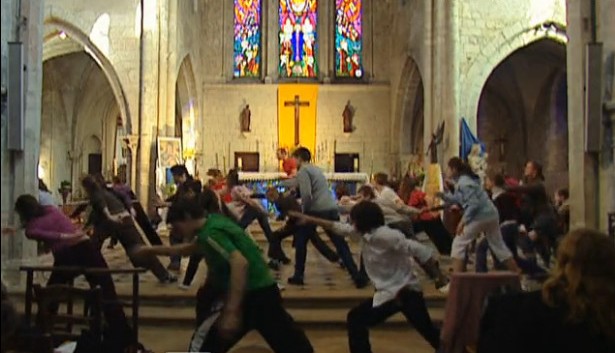
4) A well-known, popular
brotherhood of dervishes - the «Aczimendi» (characteristic
images below) - has gathered in a regional opium den in Constantinople.
Quite a crowd has gathered: commoners, poor. The ritual
begins. The rhythm is somewhat slow at the beginning. "La Illah Il Allah...". Someone is directing the pace of the beat.
Soon everything begins to "heat up" and speed up. These
dervishes - this time on their knees at first - begin to wag
their heads left and right, gradually going faster and faster.
Then they begin to lose touch with reality; they fall into a
trance-like state. Unintelligible cries can now be heard
(reminiscent of the demonically-possessed) - some have seizures
and fall down on the floor, yelling, while others scream
incessantly. Their heads are now thrashing left and right
at a crazy rhythm. The sheikh watches on, smiling somewhat
sarcastically at this religious ritual. One man has lost
consciousness, another is still uttering unintelligible cries,
while yet another is thrashing about relentlessly.
A veritable pan-demonium...
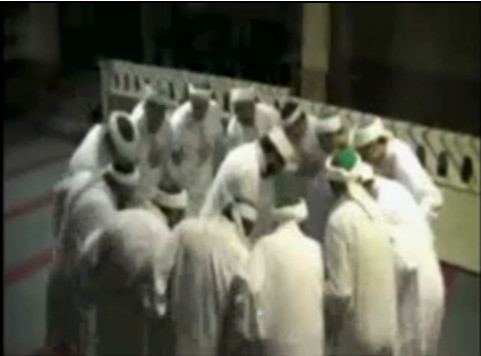
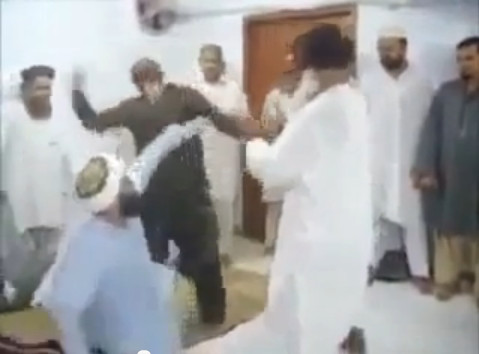
5) Early morning, somewhere in the heart of the
Holy Mountain, near Karyes. A pilgrim was making his slow
ascent towards the Elder's skete. The Elder wasn't receiving
visitors that day, which is why all you could hear was the chirping
of birds, with nature liberally scattering its Springtime fragrances
in the air. As the pilgrim got closer, the delicate scent of
incense flooded the air. You could also hear the subdued
chanting of a hymn. As soon as he reached the humble skete, he
went into the tiny chapel where the morning service was taking
place. The church was very tiny indeed, and very old. Its holy icons
were suffused by the piety of the countless pilgrims who had visited
and paid their respects there. The few monks of the skete were
chanting with melodious voices and the Elder was performing the
Divine Liturgy inside the sanctum. The pilgrim felt an
overwhelming relief, and his soul began to soar high... In a
while, the Elder came forth holding the Chalice with the Holy
Communion. The pilgrim approached, trembling. An amazing
and wonderful sensation coursed though him as he received Holy
Communion. It was as though the surrounding holy icons were
alive and the depicted saints were observing the mystery of the holy
Eucharist, enraptured. He could feel how blessed that
place was; without electricity, without any modern amenities, and
yet so pure, so divine... A place sanctified by the presence
of so many saints over so many centuries.. It was there,
inside that same humble skete, that the great Elder - Father Paisios
- had once been raised above the ground while in prayer, engulfed by
a brilliant white light.
Blessed is Your name,
Lord, unto the ages of ages, and blessed also is the Elder who
communed Your Immaculate Mysteries on that morning...

The skete of the Elder Paisios
********************************************
(*)
Turkology (Turkish: Türkoloji), also Turcology or Turkologie, is a
complex of humanities sciences studying languages, history,
literature, folklore, culture, and ethnology of people speaking
Turkic languages and Turkic peoples in chronological and comparative
context. This includes ethnic groups from the Turks (Turkish
People), Sakha in East Siberia to the Balkan Turks and Gagauz in
Moldova.
Translation: K.N.